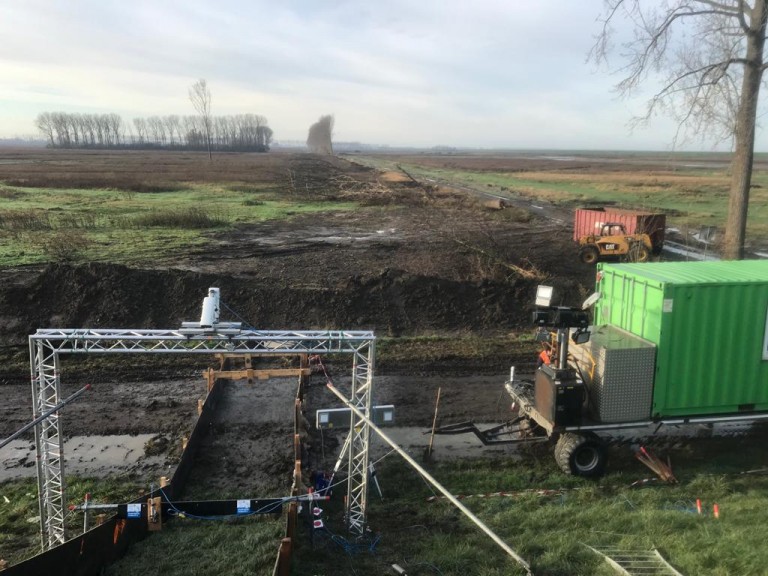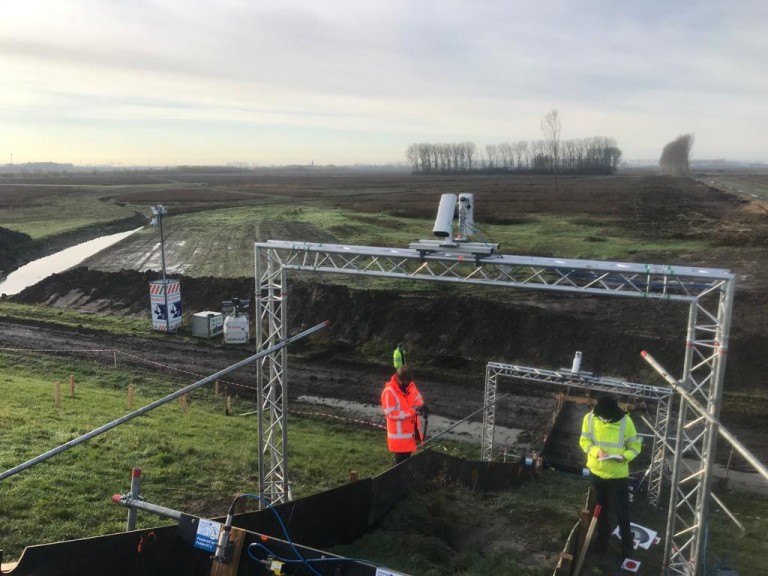Four ways to repair levee damages caused by overflow
- 11 December 2020
- Bart Vonk, Francien Horrevorts
- Emergency Response
One of the special features of the Polder2C’s project is that it combines both levee failure tests and repairs of levee damage via emergency measures. Recently, the overflow tests caused some damage to the levee in our Living Lab Hedwige-Prosperpolder. Let’s see what the ideas are for repairing the levee.
Damage is done
In the Living Lab Hedwige-Prosperpolder multiple overflow tests have been conducted by means of an overflow generator (see pictures) during the last months. The goal was to test the strength of the grass cover under different circumstances and by different anomalies in the levee. The overflow tests have been done to the point of damages on the surface. On the weekend of 14 and 15 November the first serious damage occurred. A week later another large deformation happened on a spot where a fox hole was present.


Repairs can begin
Now time has come for the Emergency Response team to get into action and use these damages to practice repairing techniques. The Polder2Cs partners were asked to share their ideas of how to repair these damages to the levee to prevent failure. On the 25th of November, during an online workshop with flood defence experts these ideas were discussed and 4 options in total were selected.
Permanent repair with clay
The first option is a permanent reparation of the largest deformation with clay. This is a proven concept. However, since we are working in the Living Lab, some new techniques to test in the field have been added, such as small excavations in the slope creating some kind of staircase. The idea is that this will help the clay layer to be better anchored. Also, special attention will be given to the transition to the adjacent levee and the way to protect the fresh clay from erosion by extreme rainfall or overtopping.
Temporary measures
The second, third and fourth option are focussed on emergency response. These options are:
- Using sandbags wrapped in foil
- Using kyowa bags
- Using riprap on geotextile
These are temporary measures that will prevent the damage from developing any further and endangering the stability of the levee. The method using sandbags wrapped in foil is not that exciting, but the way to execute it is new. Using Kyowa Bags is new and the project team is eager to test this in the field. The last option is riprap on geotextile, which will not be conducted this winter because it is a proven technology.
First repairs on 14th of December
The Emergency Response team, the Flemish Waterway and the contractor are preparing to test the second option, sandbags wrapped in foil on the 14th of December. For logistic reasons permanent clay and the Kyowa bag solutions will be brought in place in January/February 2021.
In case of any imminent danger, for instance storms combined with high tides, the contractor will close the deformation with clay available near the levee. The planned repairing techniques will then have to be planned if another opportunity arises.
